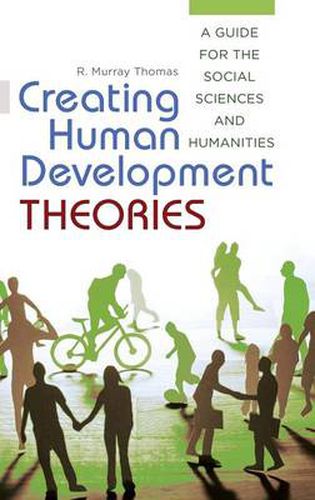Readings Newsletter
Become a Readings Member to make your shopping experience even easier.
Sign in or sign up for free!
You’re not far away from qualifying for FREE standard shipping within Australia
You’ve qualified for FREE standard shipping within Australia
The cart is loading…






How-and why-do humans develop as they do? This book clearly explains the key components of human development theories and describes how to compose novel theories regarding this age-old puzzle.
As college students progress through bachelor’s degree programs and then advance to their master’s degree theses and doctoral dissertations, they are bombarded with studies of countless theories, often adopting some author’s theory for interpreting information about human development, even when the theory does not precisely meet their needs. One way to solve the problem-a way especially tuned to the current classroom push for creative, critical thinking-is for the student to create his or her own theory. Unfortunately, even students as high as the doctoral level often don’t understand how to create a well-ordered, workable theory of their own-a crucial gap in their critical thinking skillsets. This book is the solution to that specific problem. In these pages, in clear and detailed steps, is a complete explanation for developing a theory.
The book addresses key topics such as attention to need, population, basic assumptions, key terms, causes and stages, interpreting evidence, and applications. Author R. Murray Thomas-a well-known and highly respected elder in the social sciences-also details five illustrative theories, covering their history and providing insights about how they were developed. This work will be valuable to students of psychology, human development, child development, and theory as well as those in other disciplines seeking an understanding of theory building.
Succinctly describes the theory-construction process in language free from technical jargon that is accessible to college students or general readers interested in the nature and structure of theories
Identifies the essential components that comprise theories-scientific explanations-of the human-development process, allowing readers to see how different thinkers address common concepts in their well-known theories
Offers five new theories built according to the guidelines proposed in the explanation of human development theory components
$9.00 standard shipping within Australia
FREE standard shipping within Australia for orders over $100.00
Express & International shipping calculated at checkout
How-and why-do humans develop as they do? This book clearly explains the key components of human development theories and describes how to compose novel theories regarding this age-old puzzle.
As college students progress through bachelor’s degree programs and then advance to their master’s degree theses and doctoral dissertations, they are bombarded with studies of countless theories, often adopting some author’s theory for interpreting information about human development, even when the theory does not precisely meet their needs. One way to solve the problem-a way especially tuned to the current classroom push for creative, critical thinking-is for the student to create his or her own theory. Unfortunately, even students as high as the doctoral level often don’t understand how to create a well-ordered, workable theory of their own-a crucial gap in their critical thinking skillsets. This book is the solution to that specific problem. In these pages, in clear and detailed steps, is a complete explanation for developing a theory.
The book addresses key topics such as attention to need, population, basic assumptions, key terms, causes and stages, interpreting evidence, and applications. Author R. Murray Thomas-a well-known and highly respected elder in the social sciences-also details five illustrative theories, covering their history and providing insights about how they were developed. This work will be valuable to students of psychology, human development, child development, and theory as well as those in other disciplines seeking an understanding of theory building.
Succinctly describes the theory-construction process in language free from technical jargon that is accessible to college students or general readers interested in the nature and structure of theories
Identifies the essential components that comprise theories-scientific explanations-of the human-development process, allowing readers to see how different thinkers address common concepts in their well-known theories
Offers five new theories built according to the guidelines proposed in the explanation of human development theory components